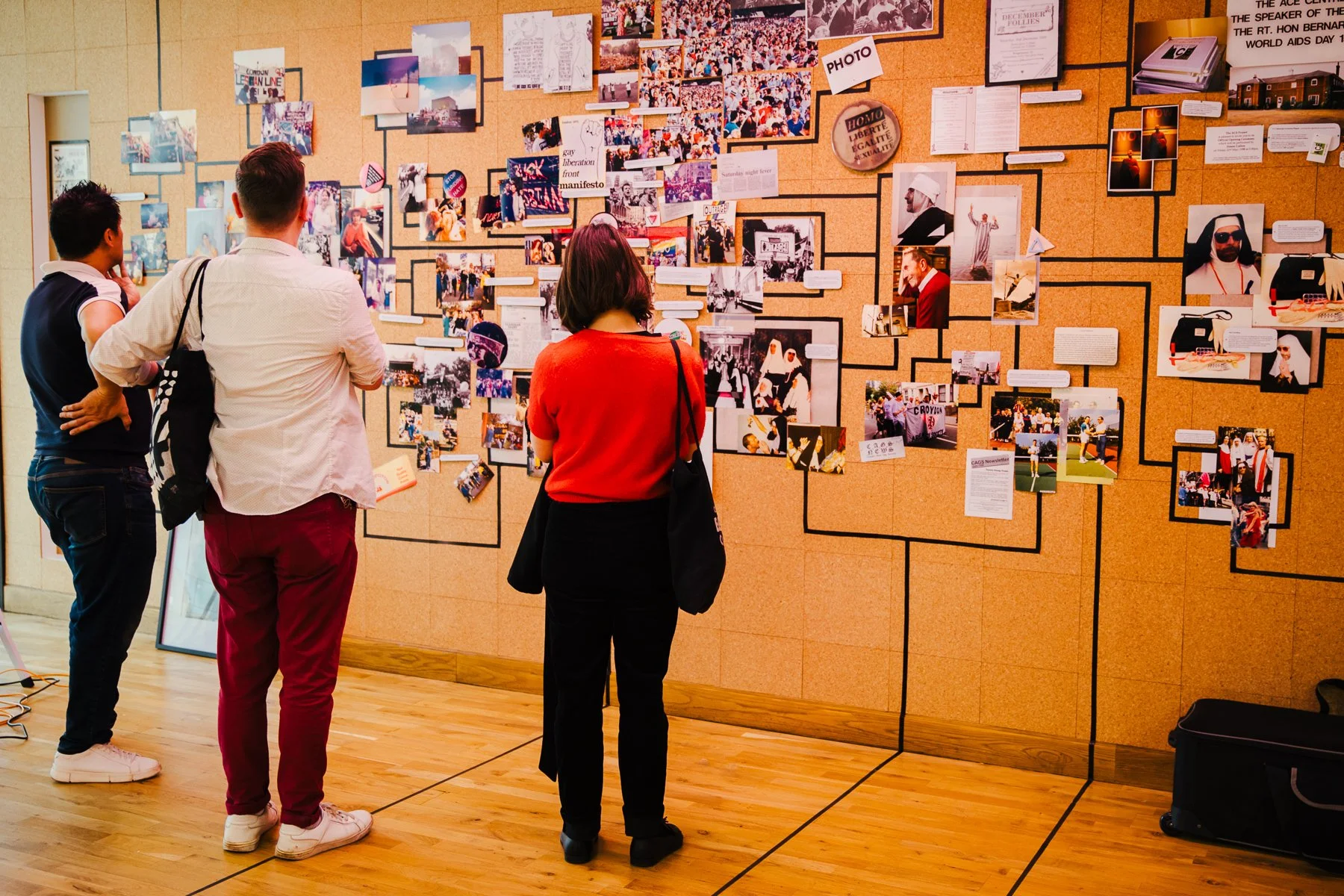Liberating Love: the act of being seen
Now that I’ve had some time to reflect, I can sit with what Liberating Love exhibition meant to me.
It’s always strange when a project comes to an end. The walls of the exhibition space have been taken down, the portraits packed away, the last traces of tape and thread peeled off. What was once an idea - a conversation turned into a plan, a plan turned into a reality - is now a memory.
But not just a memory.
I keep thinking about the people who stepped in front of my camera. The way they carried themselves, the way they took up space - some boldly, some tentatively, some with a quiet sort of power that stayed with me so long after they left the studio. Liberating Love was an exhibition about history, about activism, about community. But it was also, at its heart, about presence resistance and visibility. About the importance of existing, of being seen.
The final day of the exhibition made this even clearer. It ended with two workshops, both of which, in different ways, confirmed why queer spaces matter.
The first was a drag transformation workshop, where participants had the chance to get into drag, experiment with their gender expression and have their photos taken by a queer portrait and performance photographer Christa Holka. It was joyful, chaotic, full of laughter and energy. Drag is often spoken about in terms of performance, but it’s also about discovery. About realising that gender can be playful, fluid, entirely your own.
The second workshop focused on the trans experience and the legacy of trans activism. It was a reminder that existing, simply existing, is its own form of activism as well as an act of defiance. We often think of activism as marching, protesting, shouting in the streets. But there is also quiet activism, the kind found in choosing to live, to take up space, to demand visibility without apology. This workshop highlighted key moments in trans history but also looked at the now — at the importance of supporting trans youth, at the ways we can stand together and push back against the relentless attempts to erase us.
Now that the exhibition has ended, the question is: what next?
The portraits I took for Liberating Love won’t stay hidden. I want them to live beyond the walls of the Urban Room, to exist online, to continue telling the stories they hold. Because queer history is not static. It is not something to be filed away in an archive or framed and forgotten. It is something that moves, something that grows.
We are still writing it. Every time we step into a space that wasn’t built for us. Every time we tell our stories. Every time we love openly, without fear.
That, to me, is the true meaning of Liberating Love.






